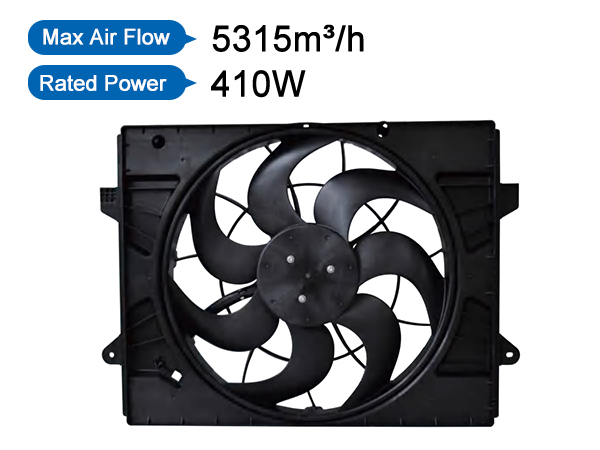The design of efficient car fans requires comprehensive consideration of principles such as clear functionality, high efficiency and energy saving, good stability, and low noise. Performance improvement can be achieved through blade design optimization, material selection optimization, motor performance enhancement, and intelligent control system technology. This article will explore how to design more efficient car fans to meet the demands of modern cars for high efficiency and environmental protection.

Design Principle One: Optimize Aerodynamic Performance
1. Blade Shape: Design streamlined blades to reduce air resistance and improve fan efficiency.
2. Blade Angle: Adjust the tilt angle of the blades to optimize the direction and speed of airflow.
3. Number of Blades: Reasonably set the number of blades to balance the fan's rotation speed and air volume.
Design Principle Two: Material Selection and Lightweighting
1. Lightweight Materials: Use lightweight materials such as plastics, carbon fiber, etc., to reduce the weight of the fan and lower energy consumption.
2. Durability: Choose materials that are wear-resistant and corrosion-resistant to extend the life of the fan.
Design Principle Three: Motor Efficiency
1. Efficient Motors: Use high-efficiency motors to reduce energy loss.
2. Motor Control: Use precise motor control systems to intelligently regulate the fan speed.
Design Principle Four: System Integration and Intelligentization
1. System Integration: Integrate the fan with other vehicle systems (such as the air conditioning system) for coordinated operation.
2. Intelligent Control: Use sensors and algorithms to automatically adjust the fan's working state based on conditions such as temperature and humidity inside the car.
Design Principle Five: Noise Control
1. Balanced Design: Reduce vibration and noise by balancing the weight and distribution of the blades.
2. Soundproofing Materials: Use soundproofing materials around the fan to reduce the spread of noise.
Design Principle Six: Sustainability
1. Energy Efficiency Standards: Design fans that meet international energy efficiency standards to reduce energy consumption.
2. Environmentally Friendly: Use recyclable or biodegradable materials to minimize environmental impact.
Conclusion
The design of efficient car fans is an interdisciplinary field that requires a comprehensive consideration of aerodynamics, material science, motor technology, system integration, and environmental impact. By following the above design principles, we can design car fans that are both energy-saving and environmentally friendly, while providing good comfort, meeting the high standards of the modern automotive industry.
Address:No.30, Dapu lndustrial Street, Changping, Dongguan, Guangdong, China
Tel: +86-186 7628 8117